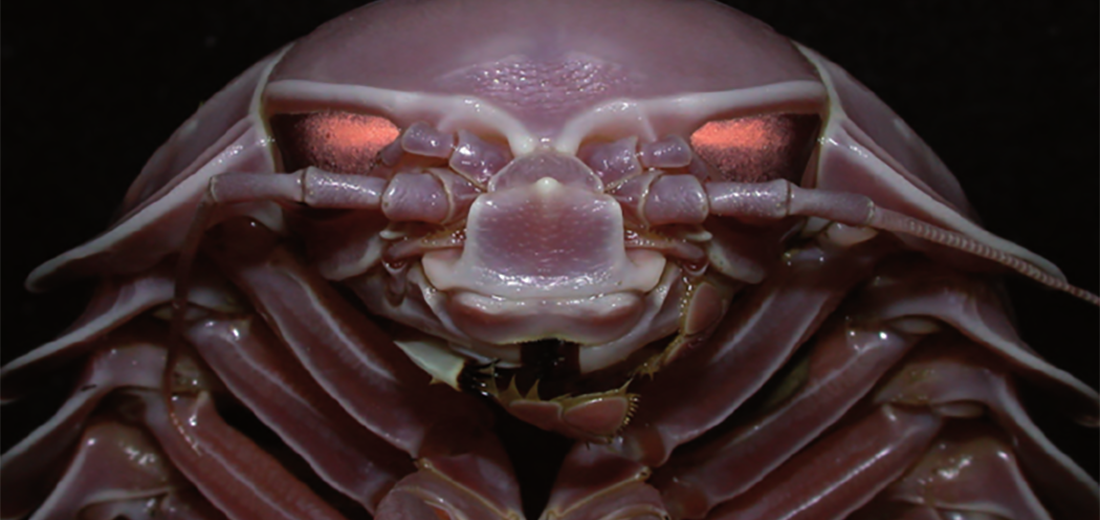
Making our way down into the ocean depths, it’s the giant isopod! These creatures are related to crustaceans and pill bugs (aka, rollie pollies). They act as oceanic janitors in that they help keep the ocean floor clean by stripping all the meat possible off of fallen carcasses that reach the ocean bed. These critters can be found at depths of up to 7,000 feet!
First the Stats…
Scientific name: Bathynomus giganteus
Weight: Up to 3.7 lbs.
Length: Up to 2.5 feet
Lifespan: Up to 4+ years
Now on to the Facts!
1.) These isopods, although typically scavengers of decaying flesh, will sometimes eat live prey and have been spotted trying to feast on trawl catches and eating sponges and other slow-moving prey items.
2.) Due to the great depths at which they live, these critters can go long periods without a meal. They are capable of going years without eating.
3.) They have fixed compound eyes with more than 4,000 individual facets.
4.) The giant isopod has four sets of jaws, which are specially designed to cut and tear at prey.
5.) When they eat they tend to eat a ton!
But wait, there’s more on the giant isopod!
6.) Since food is usually scarce, isopods live in a constant state of partial brumation.
7.) Female isopods have a marsupium (brood pouch), located on their undersides. There they hold between 20 – 30 eggs. Males have 2 specialized organs called peenies, that carry sperm to be delivered to the female.
Did you know…?
Like rollie pollies, they curl up into a ball when threatened and use their armor plating to help keep them safe.
8.) They use their antennae to experience the world around them and don’t really rely on their sight.
9.) As they grow, they shed their exoskeleton.
10.) These critters have small mouths, but they can still bite!
Now a Short Giant Isopod Video!
Also, check out the Critter Science YouTube channel. Videos added frequently!
Want to suggest a critter for me to write about? Let me know here.



